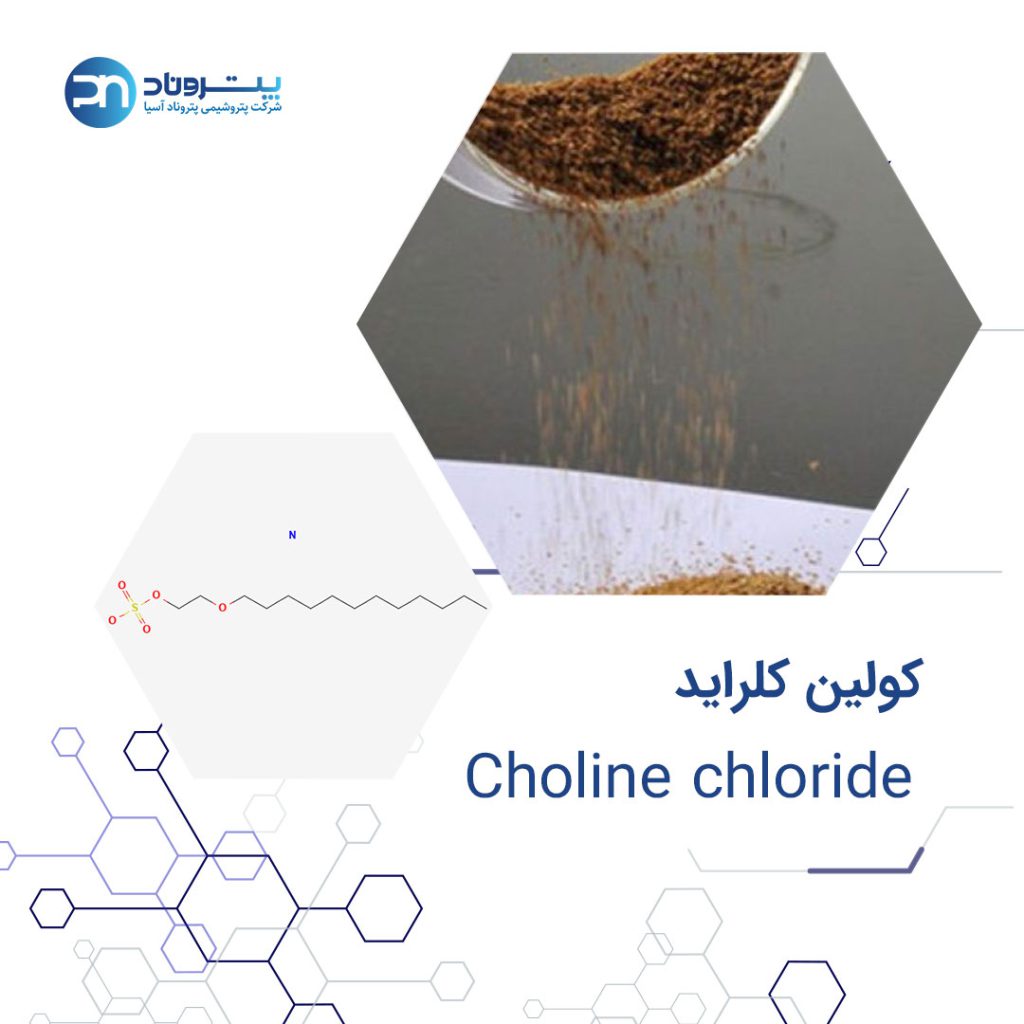Choline chloride, also known as Hepacholine, Biocolina, or Biocoline, is an organic compound with the chemical formula [(CH3)3NCH2CH2OH]Cl. It is a two-factor compound comprising an ammonium salt and an alcohol, with choline as the cation and chlorine as the anion.
Chemical Introduction
Choline chloride, also referred to as Hepacholine, Biocolina, or Biocoline, is an organic compound with the formula [(CH3)3NCH2CH2OH]Cl. It serves as both an ammonium salt and an alcohol, featuring choline as the cation and chlorine as the anion. This white, water-soluble salt is primarily utilized in animal feed.
Chemical Formula of Choline Chloride
Choline chloride, alternatively recognized as vitamin B4, belongs to the group of B vitamins (vitamin B4). Choline plays an important role in fat metabolism, aiding in the body’s fat-burning process. Its deficiency can lead to fat accumulation in the liver. Dietary sources of choline include beef heart and liver, egg yolk, cauliflower, cucumber, and peanuts.
This nutrient is commonly administered as a 70% water solution, which is incorporated into animal feed as a growth promotant agent. In terms of animal nutrition, choline is essential for the synthesis of phosphatidylcholine, a vital component of cell membranes, and serves as a precursor to the neurotransmitter acetylcholine. Choline chloride production involves the reaction of hydrochloric acid with anhydrous trimethylamine and ethylene oxide under controlled pressure in a sealed reactor.
Physical and chemical characteristics of choline chloride
|
Parameter |
Amount |
|
Molecular Weight |
139.62 |
|
Appearance |
White or Crystalline |
|
Density |
1.0238 |
|
Refractive Index |
1.54 |
|
Melting Point |
302-305 C |
|
Solubility in Water |
Very high (more than 650 g/L) |
|
pH solution 10% in water |
4.7 |
Practical Introduction
Choline chloride serves a multitude of uses, with its primary and most significant application being in animal and poultry feed. It plays a crucial role as an additive in the feed for livestock and poultry, particularly chickens, where it contributes to accelerated growth.
Applications
- Livestock and poultry feed
- Agricultural chemicals (non-pesticides)
- Lubricants and lubricant additives, including greases
- Oil and gas exploration
- Additives for specialized oil production processes
- Fuel and associated products.
|
Row |
Industry |
Usages |
|
1 |
Agriculture |
Related to agriculture, including raising and raising animals and raising crops |
|
1 |
Agriculture-animals |
Relating to animals (but not veterinary) eg, animal husbandry, animal husbandry/production, raising animals for food or fur, animal feed, household pet products |
|
1 |
Agriculture |
Related to agriculture, including raising and raising animals and raising crops |
|
1 |
Agriculture-Plants |
Products used in crops, or related to growing crops |
|
1 |
Medicine |
Medicinal product or related to the manufacture of medicine; Modified by a veterinary, animal or pet source |
|
1 |
Animal feed |
Relating to animals (but not veterinary) eg, animal husbandry, animal husbandry/production, raising animals for food or fur, animal feed, household pet products |
|
1 |
Food Additive |
It includes spices, extracts, dyes, flavors, etc., which are added to food for human consumption |
|
1 |
Food Additive |
It includes spices, extracts, dyes, flavors, etc., which are added to food for human consumption |
|
1 |
Flavors |
General flavorings used in foods, including seasonings and spices |
|
1 |
Additive to meat |
Related to meat breeding (including cows, chickens, pigs) and meat production for human consumption |
|
1 |
Fuel |
General fuels, fuel additives, motor/vehicle fuel |
|
1 |
Hygienic / sanitary |
A subset of personal care products related to health, such as cough, cold and flu, etc |
Further Details
Given the importance of utilizing choline chloride in the livestock and poultry industry, here are additional explanations regarding its significance:
Choline was initially isolated from pig bile in 1849, but its nutritional role remained elusive until the discovery of insulin in the 1930s. Researchers realized that the presence of insulin, isolated from dogs, improved the breakdown of fats in the liver, alongside lecithin. Subsequently, studies showed choline’s “lipotropic” effect in mice fed with high-cholesterol or protein diets, indicating its role in preventing fatty liver disease.
Choline chloride, or trimethyl 2-hydroxyethylammonium chloride, is an important nutrient and feed additive for optimal animal growth, particularly in poultry, pigs, and pets. Classified as a vitamin within the B vitamin group, choline lacks a coenzyme role but is critical to various metabolic processes. It functions as an amino acid or essential fatty acid, contributing to the metabolism and synthesis of glycine, betaine, cysteine, serine, methionine, and other methyl-containing compounds.
Metabolic Actions of Choline Chloride
- Integral component of phosphatidylcholine and phosphocholine, comprising 70-80% of total phospholipids in the body.
- Essential for cellular membrane construction, regulation, and maintenance, aiding in bone cartilage maturation and preventing broiler prosis.
- Crucial for fat transport and metabolism, preventing abnormal fat build-up in the liver contributing to fatty liver disease.
- Vital for acetylcholine formation, facilitating nerve signal transmission in the sympathetic nervous system and stimulating brain development.
- A source of free methyl groups essential for various biological actions, including methionine formation.
Choline content in food is standardized by the National Research Council (NRC), though variations occur due to varying conditions such as climate, soil, location, and agricultural practices that affect plant growth.
Recent efforts are directed at reassessing choline levels in commonly used feed ingredients, considering advancements in analytical tests and potential changes resulting from genetic improvements or altered food processing methods. This previously overlooked issue has earned renewed interest with encouraging perspectives.
While animals obtain choline from both diet and endogenous synthesis, nutritional supplements are essential for optimal health and performance. For instance, chickens cannot synthesize choline until around 13 weeks of age, highlighting the necessity of nutritional supplements, particularly during periods of rapid growth.
Adding choline chloride to feed is the most practical and cost-effective means of meeting animals’ choline requirements.

